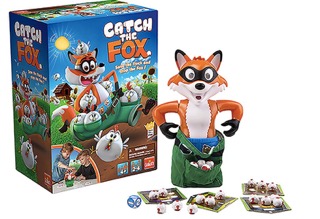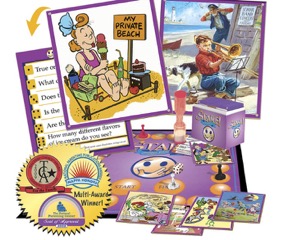Favorite Games for Addressing Speech and Language Goals
Expressive Language and Social Communication: Preschool and Early Elementary









Try modeling some of the following phrases to enhance expressive and social language for young children or children learning basic syntax, grammar, and social language:
- I/you have _____.
- I/you don’t have_____.
- I/you need ______.
- I/you don’t need ______.
- It’s a ______.
- I got ______.
- I will spin.
- Here you go.
- This is for you.
- My/your turn
- Who has _____?
- Do you have ______?
- What did you get?
Siblings can be great models and while helping, they can improve their early academic skills as well!
Preschool and Elementary: Articulation
Try these games while working on speech sounds/articulation. Kids can say a target word or sound before each turn. Siblings will love playing too.



Social communication, receptive language, expressive language, reading, and narrative language for Late Elementary
These games can be used to increase a child’s awareness of others’ thoughts and help them to strategize accordingly. Model talking through your thoughts (e.g., I think I will move this pawn because if I don’t someone might land on me and I will be sent back to start; I know you had a ship close by, so I will guess _____; I see you have 3 in a row here, so I will _____). Have students read directions and explain how to play the game.



Expressive language skills (e.g., describing, formulating sentences) and questioning can be embedded into the following games:



MagneTalk Match-up Adventure Kit (Super Duper Publications)
For All Ages
- Hide and Seek {Model questions and statements (e.g., “Are you in the _____?, Where is ______?, I think I hear _______., I will look behind _______.”)}
- Scavenger Hunt {Hide silly items around the house or outside and give directions for finding them, or have kids ask questions (e.g., “Is the ______ in the living room?, Am I close or far away?”)}
- Barrier Game with paper and crayons: Tell each other what to draw so that your pictures match when the barrier is removed. Be sure to include concepts such as big/little, on the top, in the middle, next to, etc.
- Simon (or your child’s name) Says: Take turns being Simon
- I spy
- Twenty Questions
- Read, Read, Read!!! One of the best things to do with kids is read to them (even if they can read themselves). Label pictures; Describe pictures; Stop and ask questions; Make predictions; Talk about the characters’ problems, feelings, and what they are planning; Discuss unfamiliar words; Keep a running list of new vocabulary words with definitions, synonyms, and examples of how to use them in sentences; have kids repeat or read words or sentences that include target sounds.
Get this Post as a Printable Handout
Compiled by Katie Curra, MS, CCC-SLP
